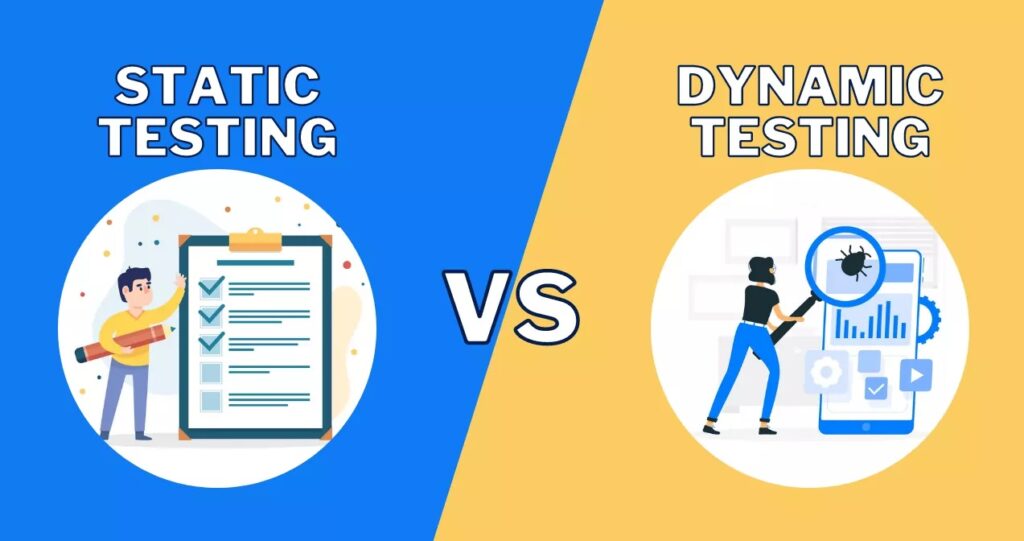To protect your company’s critical data, you should employ the most secure security measures possible. As a result, there are two basic sorts of testing when it comes to application security. The two most crucial approaches in your arsenal are dynamic application security testing and static application security testing.
Static application security testing is a process where you review the code without executing it. Dynamic application security testing is done while the code is being executed. In this blog post, we will discuss the differences between static and dynamic application security testing, as well as their benefits and drawbacks. We will also explore whether or not they can be done together.
What Is Static Application Security Testing?
As we mentioned before, static application security testing is the process of reviewing code without executing it. Static application security testing is important because it allows you to identify flaws early on in the development process. Static application security testing is essential because it allows you to spot problems before they cause further problems.
What Is Dynamic Application Security Testing?
The application security test is conducted while the program is executing. This means that you are able to test for vulnerabilities in real-time. Dynamic application security testing is important because it can find vulnerabilities that static application security testing might miss.
Features of Both SAST and DAST
Here are some of the characteristics of static and dynamic application security testing:
- Manual or automated tools may be used to perform static application security testing.
- This allows you to find vulnerabilities in your application early on before it’s even deployed with SAST.
- Dynamic application security testing is done while the code is being executed.
- Static application security testing may miss vulnerabilities that dynamic application security testing can discover.
The Importance of Both SAST and DAST
Static application security testing is vital since it allows you to identify flaws while the project is still in development. Dynamic application security testing is important because it can find vulnerabilities that static application security testing might miss.
Difference between SAST and DAST
Let’s look at the differences between static and dynamic application security testing now that we’ve covered what both have to offer.
- Manual scanning, as well as the use of automation tools, is an option for static application security testing. Dynamic application security testing is done while the code is being executed. This means that dynamic application security testing is able to test for vulnerabilities in real-time.
- You can use static application security testing to discover flaws early in the development process. Because dynamic application security testing may find unknown threats that static application security testing may miss, it’s important to remember that they’re distinct tools with different limitations.
Advantages and disadvantages of both static and dynamic AST?
The pros and drawbacks of both static and dynamic application security testing may be found.
- The benefits of static application security testing include the ability to conduct it manually or with the assistance of automation tools. Static application security testing also enables you to identify flaws early in the development process.
- The fact that static application security testing is time-consuming and expensive is just one of its drawbacks. Additionally, static application security testing might not be able to find all of the vulnerabilities in a piece of code.
- One of the advantages of real-time dynamic application security testing is the ability to detect breaches in real time. Static application security testing is more costly than dynamic application security testing.
- However, dynamic application security testing has its own disadvantages as well. For example, dynamic application security testing might not be able to find all of the vulnerabilities in a piece of code.
Can Static and Dynamic Application Security Testing Be Done Together?
Static and dynamic application security testing can be done together in order to get the most comprehensive view of the code’s vulnerabilities. By doing both static and dynamic application security testing, you will be able to find more vulnerabilities than if you only did one or the other.
The main disadvantage of employing both static and dynamic application security testing is that it consumes extra time on the same piece of code.
Conclusion
The two most popular approaches for application security testing are dynamic and static application security testing. Overall, static vs dynamic application security testing is a matter of preference. It is up to the security testing team to decide which type of security testing is best for their needs.
Author Bio-
Ankit Pahuja is the Marketing Lead & Evangelist at Astra Security. Ever since his adulthood (literally, he was 20 years old), he began finding vulnerabilities in websites & network infrastructures. Starting his professional career as a software engineer at one of the unicorns enables him in bringing “engineering in marketing” to reality. Working actively in the cybersecurity space for more than 2 years makes him the perfect T-shaped marketing professional. Ankit is an avid speaker in the security space and has delivered various talks in top companies, early-age startups, and online events.
https://www.linkedin.com/in/ankit-pahuja/

